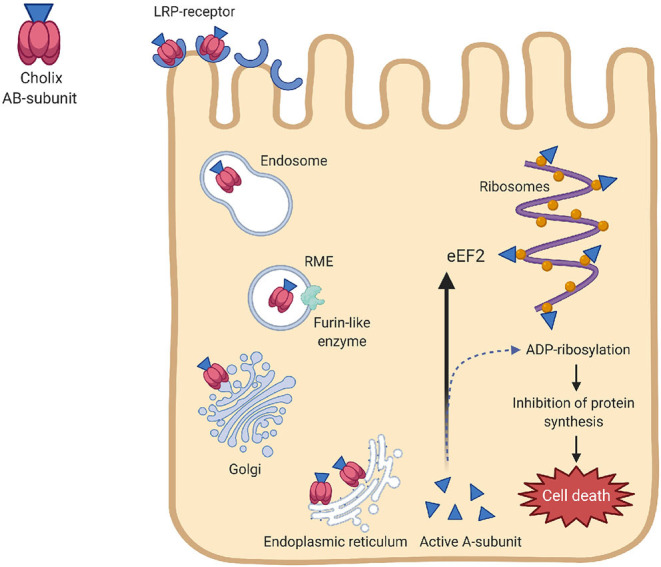Figure 3.

Mechanisms of action of cholix toxin. Chx binds to the lipoprotein receptor-related protein (LRP-receptor) of the eukaryotic cells, followed by internalization by receptor-mediate endocytosis (RME). A furin-like enzyme is believed to be responsible for nicking cholix in its arginine-rich loop. After passing the Golgi complex, cholix follows the retrograde pathway in the endoplasmic reticulum to form the A and B-subunits. The A-subunit translocate into the cytoplasm and prevents protein synthesis by altering the diphthamide residue of elongation factor 2 (eEF2) through its ADP-ribosylation activity. Inhibition of protein synthesis by specific modification of eEF2 leads to cell death.
